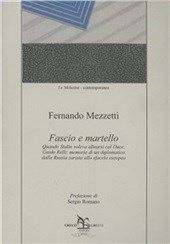Guido Relli has been Consul General of Italy in Hong Kong and Macau from 1954 until 1956. He was born in Trieste as Guido Kreglich. At the outbreak of the First World War, aged 17, by pure chance was in Russia as a sailor on a ship. Because he was an Austro-Hungarian citizen, he was interned in Siberia until the end of the conflict. There he learned to speak fluent Russian, German, English and French. This was the beginning of his relationship with Russia, which lasted throughout his life. Relli spent many years at the Embassy of Italy in Moscow as an interpreter, and personally witnessed numerous dramatic events, including Stalin’s purges and the Axis Powers’ attack against the Soviet Union.
Relli had been a well known and influential figure at the Italian Embassy in Moscow before WWII. Here is what Bernd Wegner has to say in his book From Peace to War: Germany, Soviet Russia, and the World, 1939-1941 Oxford, 1997.
Guido Relli, an Italian diplomat, recounted his memories to Ferdinando Mezzetti in a book published by Greco e Greco (Fascio e Martello, 1997). He reported that Tukhachevsky visited the Italian Embassy in Moscow in 1936 to attend the projection of a movie on the military operations against the Negus’s army in Ethiopia. He watched with extreme interest and congratulated the Ambassador and the Military Attaché. The relations cooled down, understandably, during the years of the Spanish civil war. In the summer of 1940, however, the Foreign Minister Molotov proposed to Italy a treaty in which the Black Sea would be divided between Italy and the Soviet Union, much like the treaty signed between the Soviet Union and Germany in August 1939 for Poland and the Baltic Sea. Such meetings and agreements were based on the assumption that Italy and the Soviet Union had valid economic and political reasons to become partners. Although it might seem a paradox, it can perhaps be said that the two countries shared a mutual attraction. Left-wing Fascism expressed some sympathy for the USSR, while Moscow showed a certain curiosity for Mussolini’s regime.

